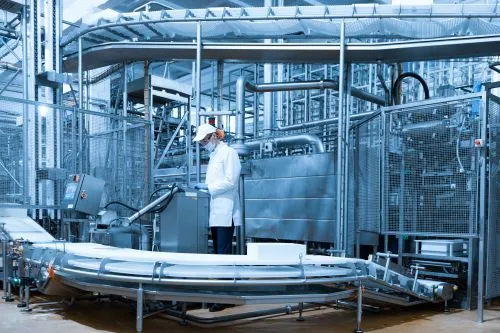1570

There are various mitigation options to reduce greenhouse gases while satisfying the increased demand for terrestrial animal-derived foods, according to the latest FAO report on reducing emissions from farm animals and livestock farming.
An essential thing
It is essential to outline pathways to reduce greenhouse gas emissions from the world's animal farming systems in the face of a growing global population and an estimated 20% increase in demand for terrestrial animal-derived products by 2050.
Pathways to emission reduction - A global assessment of greenhouse gas emissions and mitigation options in agri-food systems for animals, published on Friday on the sidelines of the COP28 climate summit of the UN Climate Change Conference, raises the bar for opportunities for policymakers, industry participants, small farmers, and consumers.
"Beyond assessing baseline emissions, this report provides estimates of future emissions in production growth scenarios and outlines pathways to emission reduction by applying well-established best practices in animal management.
It clearly demonstrates that ambitious and innovative programs and comprehensive interventions have the potential to bend the emissions curve while production increases," said FAO Deputy Director-General Maria Helena Semedo.
"Solutions such as improving animal health, husbandry practices, reducing losses and food waste, and directly addressing greenhouse gas emissions have the potential to provide multiple benefits for people and the planet but require sectoral investment to reduce efficiency gaps, while also meeting increased global demand for animal protein," she added, noting that interventions must be location-specific, facilitate farmers' access to financing and services to enable them to implement tailored interventions.
A double-blind process
The report, subjected to a double-blind peer review process involving global experts, highlights several pathways that impact both the supply and demand sides of the livestock sectors, which, if collectively adopted, could address environmental impact and promote sustainability.
While there is no one-size-fits-all solution and more work is needed to understand the barriers to implementing and scaling up these interventions, increasing productivity and production efficiency throughout the entire value chain is the most promising way to mitigate and reduce animal emissions.
Facts and figures
In 2015, livestock agri-food systems, including on-farm production activities and some key supply chain processes such as land use change related to feed production, transportation, and inputs, accounted for approximately 6.2 billion tonnes of CO2 equivalent (GtCO2eq) annually, equivalent to about 12% of all anthropogenic greenhouse gas emissions and approximately 40% of total emissions from agri-food systems, estimated by FAO at approximately 16 GtCO2eq.
Without interventions and productivity gains, meeting increased demand is likely to bring global animal emissions to nearly 9.1 GtCO2eq by 2050.
The figures are derived from the Global Livestock Environmental Assessment Model (GLEAM), an innovative FAO tool that adds significant value and opportunities to support better analyses of mitigation pathways. Using a geospatial framework, GLEAM can analyze activity data from different animal production systems worldwide and calculate their carbon footprint at different scales and for different sources.
GLEAM uses a life cycle assessment approach covering emissions associated with animal rearing, including enteric fermentation, as well as indirect emissions stemming from upstream activities such as feed supply and other inputs, and some downstream processes including post-farm transport, processing, and packaging of raw products. It does not cover retail and household stages.
Useful comparisons
For the first time, the FAO report useful compares GLEAM estimates with independent emissions related to animals that are part of FAOSTAT data on agri-food system emissions. A point-by-point comparison of relevant emission processes shows that the two datasets provide consistent estimates of emission levels, with FAOSTAT offering a more comprehensive approach to agri-food systems, while GLEAM allows users to conduct much more detailed analyses of mitigation options in animal farming systems.
Some highlighted data include the finding that cattle - including meat and milk - contribute approximately 3.8 GtCO2 equivalent per year, or 62% of the total animal emissions, while 14% are attributed to pigs, 9% to chickens, 8% to buffaloes, and 7% to small ruminants. In terms of commodities, meat production accounts for two-thirds of emissions, milk 30%, and eggs the remainder.
Direct emissions, including methane from enteric fermentation by ruminants and nitrous oxide from manure management systems, account for 60% of total emissions from the sector, the rest coming from fertilizer and pesticide manufacture for feed production, feed production itself, as well as feed processing and transport, live animals and animal product processing, and changes in land use associated with feed production.
Overall, methane represents just over half of the total, and its spatial distribution closely follows the location of ruminant populations, whose digestive systems produce methane from a grass-based diet that humans cannot digest. For monogastric species such as pigs and poultry, emissions mainly come from feed production and manure management.
A useful tool
The GLEAM tool allows the report to analyze significant differences in the carbon footprint or emission intensity of a unit of milk, meat, or eggs between countries, species, and production systems, reflecting local issues and often the most promising mitigation potential.
The range of average milk emission intensity from cattle on pasture systems varies by a factor of 20, and in a study of smallholders in Kenya, by a factor of 50 for beef. In this variation, mitigation efforts can yield the most results.
The report's findings, along with some key input data and related information, are available on the GLEAM dashboard, which provides a set of tools to explore data interactively.
While investments to engage in concrete actions to mitigate animal emissions must be accelerated, FAO will continue to enhance the GLEAM platform so that it can offer on-demand online simulations and allow users to immediately assess the impact of implementing different interventions in various scenarios on specific environmental indicators.
Mitigation goals
The report aims to enable the livestock sector to contribute to efforts to limit global temperature rise well below 2 degrees Celsius.
Options to produce more with fewer emissions are available for all regions and production systems.
To maximize mitigation potential, it is essential to facilitate farmers' access to services and invest in building their capacity to implement customized interventions.
Moreover, mitigation strategies must be both locally adapted and integrated holistically into broader programs that support resilience and livelihoods in rural areas, as well as other sustainability objectives.
Adopting best practices - including agroforestry and optimized rotational grazing - across all pastures globally could harness enough sequestration capacity to offset nearly a third of current annual animal emissions, but the economics of such a shift may not be viable in the short to medium term.
Similarly, replacing a portion of pigs' diet with household waste residues could lead to dramatic reductions in total nitrogen emissions but would require adequate investment in infrastructure, policies, and regulations to ensure feed safety and reduce the risks of triggering animal disease outbreaks, as seen with African Swine Fever in recent Asia.
Mitigation solutions
Some proven mitigation solutions, such as advanced breeding and feed mixtures - including new animal feed additives - may not be suitable everywhere due to cost, safety, and accessibility issues.
Pasture-based systems, for example, are unlikely to benefit from strategies designed for housed systems. Moreover, the mitigation effects of reducing the consumption of animal-derived foods will depend on what replaces them.
Improving animal health is a solid approach to increasing production efficiency and increasing animal protein availability without requiring larger or more animals. Healthy animals have higher yields, a crucial channel for emission intensity reduction.
Under its Animal Transformation for Sustainability Initiative, FAO supports countries in transitioning to a sustainable livestock sector, taking into account the diversity of animal production systems by developing and implementing sustainable and accessible animal production and health solutions to increase productivity and mitigate greenhouse gas emissions, adapt to climate change, and improve health. (photo: Freepik)





